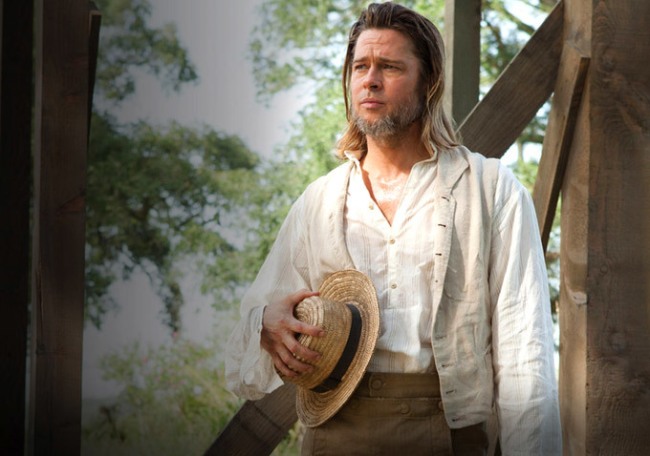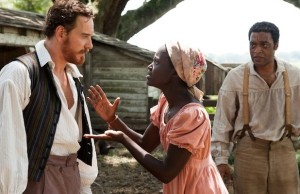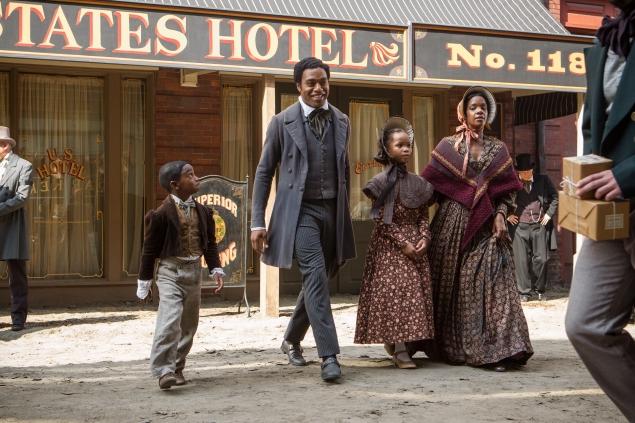 January
16
January
16
Tags
12 Years a Slave – Steve McQueen assuages white guilt. (Film Review)
When the Howard Government won a mandate in this country in 2004, part of which stood on the shoulders of their unprecedented poor treatment of asylum seekers that included incarceration and bald-faced lies about these people trying to drown their children in order to curry favour with the Australian public, compensation was made for leading the nation toward so much hatred (this country experienced its first ever race riot under the Howard Government) by giving Indonesia one billion dollars when the Tsunami hit in December 2004. That ‘gift’ followed a period of donation from the Australian people the likes of which had almost never been seen in this country. When I used to work in development, we called that ‘transference’, when communities would give money to socially sanctioned causes in order to compensate for irrationally poor behaviour (often toward the same community) in other areas. Africa is enormously burdened under ‘guilt-assuaging donations’, most useless, all designed to help rich folk in Western nations face themselves in the mirror each morning.
12 Years A Slave is a film about the poor treatment and the inhumane holding of slaves in Southern America in the 1840’s. It is based on the autobiography of Solomon Northup, a free man kidnapped and sold into slavery for twelve years, being taken away from his wife and his children without them having any chance of discovering where he went or what happened to him. During the period, Solomon (Chiwetel Ejiofor), as his story is represented on-screen by director Steve McQueen and writer John Ridley, he passed between multiple landowners, experiencing the harshest treatment imaginable, witnessing worse and brief moments of goodness spread throughout. He is eventually in a position to tell his story to a Canadian labourer named Bass (Brad Pitt) who is able to secure his papers and organised to have him returned to his family.
12 years a Slave is a very difficult film to watch, for several reasons that I will attempt to relate with clarity in this commentary / review. Steve McQueen is an artist focussed on the beauty of the image, and so in many ways 12 Years a Slave is an extremely beautiful film, even as it is an extremely violent film. There are many distressing scenes that McQueen, and rightly so, pits against the Holocaust and the treatment of the six million lost Jews. It’s a nice idea, because the viewer experiences a clarity of communication where the passivity of the slaves is brought into stark focus and revealed in its horrific truths better than I’ve ever seen the idea treated in a film before. It’s an important point, because in the absence of the manic violence of the deep south, the passivity has sat as an unanswered question too politically incorrect to address, at least in the mind of white folk. Violence is often portrayed by a single act, when it was as much a part of Solomon Northup’s daily life as it was for any concentration camp inmate. This overt gesturing toward World War two themes has earned the film many comparisons with Schindlers List, to the point of favourable comparisons between the two directors. This is a comparison I would agree with entirely.
Another all-too-often ignored aspect of this troubled period of history that McQueen very successfully reveals, is the financial undercurrent of slavery. The primary motivator for taking slaves, and indeed for pilfering them from the northern states was financial, not racial. They were cheap labour, a point often obliterated in favour of focus on the human rights abuses, but McQueen rightly brings this issue to the fore, money being an important method of communication and wealth repeatedly implying trust, honour and a peculiar relationship with the law. McQueen paints a world where money, more than race gives whites power over blacks, and irrational sadism is a bi-product of guilt. This is by far the most interesting aspect of the film, even if it is too underplayed. Schindler’s List toyed lightly with the idea also, and both films have left a fertile field behind them for a director with enough courage to take up this important point.
However, what McQueen fails to address, and either can’t or refuses to see, is that slavery under these circumstances continues today. There is not a person in the world who buys Nike, or shops at Wal-Mart that hasn’t heard of sweatshops, and desperately poor working conditions. The rich still do to the poor what they did in the time of Solomon Northup in sweatshops in many countries, Bangladesh for example, to the point of separating parents from children, beatings, sexual assaults, and threats to their life, and as in the time of Solomon Northup, the rich have organised sadistic overseer’s to take control. Slavery isn’t over, it’s just changed country, race and exposure, the underlying consistency between the time of Solomon and today being cheap labour and the rich exploitation of the poor.
This is all very well, and not the point of the film, which is a fair point well made. However, the underlying problem with 12 Years a Slave, and one that intrinsically ties it to the modern condition of slavery is the artistic treatment of object over human response. It is McQueens oeuvre to use image and object to avoid a certain kind of sentimentality, focussing on the box that contains the individual, rather than the individual trapped in the box. This worked in Hunger, a brilliant film and one that excited all of us to what might be possible from the artistically motived McQueen. It did not work in Shame, a film that so ignored the human component that audiences were reduced to discussing Michael Fassbenders penis length after watching a film about sex addiction as they giggled behind their hands. McQueen’s avoidance of his human subject leaves us with nothing but objectified response, and this failure has reached a repulsive zenith in 12 Years a Slave. The fetishisation of the violence, the focus on beautiful image at the expense of the human response, means Solomon is almost painted as an outsider constantly looking in on what is before him, being affected only in brief moments which occur as oddities, rather than natural responses to his environment. A crucial scene where Solomon joins in the singing of a spiritual with his fellow slaves, the raw emotion of losing his free self, becoming one of them, and yet retaining a quiet dignity is left floundering in an ocean of blood and ravaged flesh that removes its power completely. All of this is exemplified in the casting of Brad Pitt as the Canadian (the American lefts favourite trophy wife) who comes in to save the poor black man. The facts of this occurence may be accurate, but the casting of Pitt in that role is so pandering to the white American middle class that it is almost racist in its distraction. McQueens Solomon gives us permission to stand outside, as if what is going on in front of us has nothing to do with us, and his Bass (Pitt – who is also the producer) gives us permission to see ourselves as transformed. It is another time, another place, and our baring witness is some sort of compensatory promise that it will never happen again.
And yet it continues to happen every day, and we live off it with far more freedom and ease than the deeply confronted to the point of manic violence the masters of the deep south did. The barrage of adoration the film receives comes from mostly white, first world country reviewers (who are mostly all that is available of course) who justify the violence in an emotional sweep of how important it is that we see this film in all its stark reality. And yet, more than any other film I have ever seen on this subject, it subverts the reality in favour of pandering to the wealthy middle class. Solomon Northup has been used by Steve McQueen to assuage wealthy, white guilt. There is something deeply wrong with this film and our responses to it.





Bravely said. Thank you.
LikeLike
Thanks for the support – and for commenting. 🙂
LikeLike
Pingback: Mandela: Long Walk To Freedom – Justin Chadwick’s comfortable confinement. (Film Review) | Lisa Thatcher
Hi Lisa,
I haven’t seen the film yet but I completely agree, people don’t acknowledge or want to face the reality of today’s world, that our consumer society is based on gross inequality in the “developing world”. People are somehow surprised when a new news story highlights the plight of people working for little wages in factories/ fields to produce the basic materials/ final products for Western companies to sell at a big profit. But i would have thought that it’ll be a minority of cases where that is NOT the case. And to add to that, the thirst for new products, replacing last years old products (e.g. phones…) is having/ will have a massive environmental impact… so yes, I agree, the pain that is being caused NOW must be faced and dealt with. I don’t know how though!
LikeLike
Hi Jules, so nice to hear from you. Thanks for reading and commenting.
I found myself getting more and more irritated by the facts you state as the film wore on, and not because of the severity of the content, but by the implication that the content is part of an American dark past. The film is successful in highlighting the important relationship between slavery and money, but using Brad Pitt as the face of salvation is a politically charged statement because he so strongly represents the ‘American Dream’ – almost more than any other person in the world. The most adoring critics all cited that as a “poor casting choice” at the very least. The hype and the violence work together to try to bring authenticity to the film, because it is problematical at its core. I know this is a radical statement, but I think Django Unchained was a more respectful film on the subject, simply because it made no attempt to absolve white guilt. I feel more strongly about this the more I think about the film. It’s been a very disturbing spectacle.
LikeLike